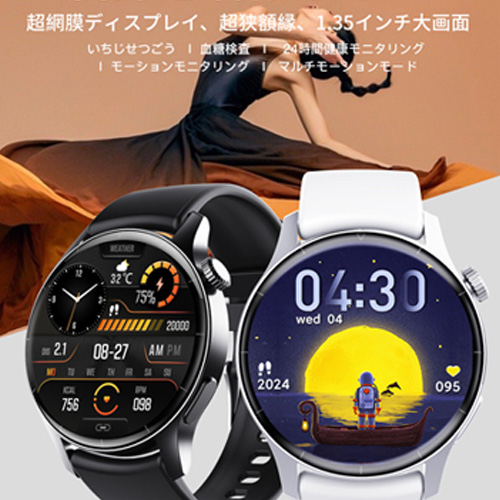How Diabetic Smart Watches are Changing Blood Sugar Monitoring?智能手錶如何改變血糖監測?

How Diabetic Smart Watches are Changing Blood Sugar Monitoring
For people with diabetes, monitoring blood sugar levels is a crucial part of managing the condition.
However, traditional blood tests can be painful and increase the risk of infection. Fortunately, the development of non-invasive monitoring methods, such as the Diabetic Smart Watch, is changing the game.
Unlike traditional blood test, the Diabetic Smart Watch uses a non-invasive design that eliminates the need for finger-prick testing. This is particularly beneficial for those who find blood tests painful or inconvenient, or who need to test their glucose levels frequently throughout the day.
Smart Watch is becoming increasingly popular among health-conscious individuals due to their ability to track a variety of health metrics.
However, it’s important to understand the accuracy of the sensors used in these devices as there can be variation in the quality and precision of different sensors.
The health-related sensors used in Smart Watches are of high industry standards and, when calibrated correctly, can provide useful health data. These include resting heart rate, resting blood oxygen, blood pressure, wrist skin temperature, and blood glucose levels. The accuracy of each metric can vary among different Smart Watches Model, Skin conditions and so forth.
The following are some tested results for the accuracy of various health-related sensors used in Smart Watches:
- Resting heart rate: ±3bpm
• Resting blood oxygen: ±2%
• Blood pressure: ±10mmHg
• Wrist skin temperature: ±0.2℃
• Blood glucose: ±20%
It’s important to note that these data are for reference only and can vary among different Smart Watches.
While the Diabetic Smart Watch is not a medical device, it has the potential to become an affordable and widely available option for monitoring blood sugar levels. It’s important to note that the measurements provided by Smart Watches are intended for informational purposes only and should not be relied upon as a sole basis for medical diagnosis or treatment.
In conclusion, non-invasive monitoring methods, such as the Diabetic Smart Watch, provide a promising alternative to traditional blood tests for people with diabetes. As with any health technology, it’s important to understand its limitations and ensure proper calibration for accurate readings. The development of this technology offers hope for a less painful and more convenient way to monitor blood sugar levels, benefiting individuals with diabetes and improving their quality of life.
智能手錶如何改變血糖監測?
對於糖尿病患者來說,監測血糖水平是管理疾病的關鍵部分。然而,傳統的血液檢測可能會很痛苦,並增加感染的風險。幸運的是,非侵入性監測方法的發展,例如智能糖尿病手錶,感應器,加上晶片運算能力,正在改變這一局面。
與傳統的血液檢測不同,糖尿病智能手錶使用了非侵入性設計,消除了篤手指的痛。
由於智能手錶能夠追踪各種健康指標,因此在健康意識強的人群中越來越受歡迎。但是,重要的是要了解這些設備中使用的感測器的準確度,因為不同感測器的質量和精度可能會有差異。亦會因皮膚濕度,潔淨度等因素產生差異。
智能手錶中使用的與健康相關的感測器符合高行業標準,並在正確校準時可以提供有用的健康數據。這些包括靜息心率、靜息血氧、血壓、皮膚溫度和血糖水平。每個指標的準確度可能會因不同的智能手錶而有所不同。
以下是一些經測試的健康相關感測器的準確度結果,供參考(儘管可能因不同的智能手錶而不同):
• 靜息心率:±3bpm
• 靜息血氧:±2%
• 血壓:±10mmHg
• 手腕皮膚溫度:±0.2℃
• 血糖:±20%
重要的是要注意,智能手錶不是醫療設備,提供的測量值僅供信息參考,不應作為醫學診斷或治療的唯一依據。
總之,非侵入性監測方法,例如糖尿病智能手錶。與任何健康技術一樣,重要的是要了解其限制並確保進行正確校準以獲得準確的讀數。這項技術的發展為監測血糖水平提供了一種更少痛苦、更方便的方式,使糖尿病患者受益,提高他們的生活質量。